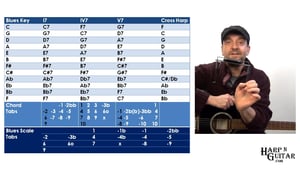
Blues Harp Cheat Sheet
Keys, Chords, and Cross Harp
Blues Harp Cheat Sheet for Harp N Guitar
Lesson Info
Lesson Length: 7:07
Instructor: George Goodman
Recommended Gear
Takamine EG541SC
I am playing my black tak in this one.
This is a Takamine G Series EG541SC bought in North Carolina when I was playing in a band called Double Take.
Specs:
Top - Solid Spruce
Back - Nato
Sides - Nato
Finger Board - Rosewood
Electronics - TK40
Finish - Gloss Black
Check out more Takamine G Series Guitars
The F harmonica is required for second position Blues in C.
I often play through a Shure Green Bullet microphone Model 5200 and Fender Super Champ amplifier
The Hohner Harmonica Neck Holder fits harmonicas up to 7-1/2" long.
With a long-lasting nickel-plated finish, this harmonica rack is adjustable and fits any neck shape.
Help File
Video Transcription
Harmonica Tabs
Basic harmonica tabs are provided to indicate which holes to blow or draw and bends or overblows if any.Each hole of the harmonica is numbered 1 through 10 which you will see on the top plate just above the corresponding hole. So in the harmonica tabs, numbers refer to the hole on the harmonica.
Tab Key
4 = Blow on 4
-4 = Draw on hole 4
b = Semi-tone bend
bb = Whole tone bend
o = Overblow
Blues Key
The first column in the Blues Harp Cheat Sheet is the Blues Key column. There are 12 different keys in music and this column displays the 12 possible different keys that the Blues can be played in.
The most common Blues keys would be A and E which is due more to the tuning of the guitar than anything else. Playing Blues in A or E allows the guitarist to use open strings while comping or playing rhythm. This is displayed in the Blues Progression section below.
As you go down the Blues key column, the key goes up by a 5th or 5 notes. C is the first key shown in the Cheat Sheet, then going up a 5th we arrive at G. The next key is D, then A, E and so on.
I7, IV7, V7
A standard Blues progression uses 3 chords that usually take the form of dominant 7th chords. These 3 chords are noted in roman numerals and are built on the root or first note of the key, I7, the fourth note of the key, IV7, and the fifth note of the key, V7 or shortened to I, IV, V.
Under columns I7, IV7, and V7 are the chords that are used for a typical Blues. For example, if the Blues key were G, the three chords used would be G7, C7, and D7.
Cross Harp
Cross Harp is the key harmonica to use in relation to the Blues Key. Looking again at the Blues Key of G, a C harmonica would be used for cross harp. Blues in A would require a D harmonica and Blues in E would require an A harmonica for playing in cross harp which is also known as second position.
The Cross Harp is determined by going up a fourth or four notes from the Blues key.
For example, if the Blues key is C, then count up four notes from C with C being 1, D is 2, E is 3 and F is 4. Use an F harmonica for Blues in C.
Let’s try another example, Blues in E. Go up four notes from E starting with E – E F# G# A. Use an A harmonica for Blues in E.
5 Pack Case of Hohner Special 20s
What do I like about the Special 20s?
Great Sound, Smooth Comb, Responsive to Bending - but not loose, Affordable. I play Special 20s more than any other model.
Martin Acoustic Guitar Strings
If it's been a while since you've changed your strings, you won't believe the difference in the sound. These are some excellent Martin strings. Need I say more? Totally affordable.
Hohner Harmonica Holder
The Hohner Harmonica Neck Holder fits harmonicas up to 7-1/2" long, has a nickel plated finish and fits any neck shape.
I have used a similar holder for over 25 years. This no-nonsense holder will work for you.

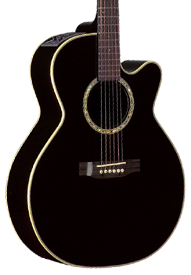
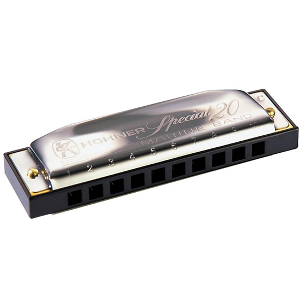
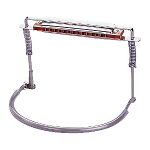


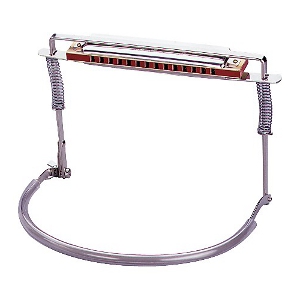
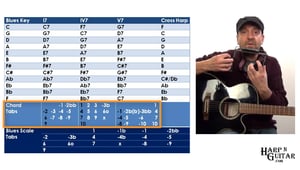
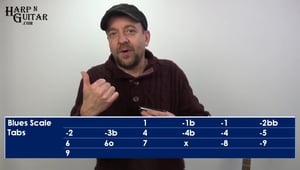

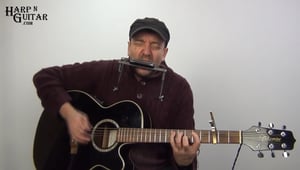
George you are a good teacher! Maybe for me it’s easier to understand your comments ‘
cause I used to play music as well. But I can judge what is important or just a sales talk.
For beginners you fully explain what’ going on. I’m happy that I found you.
Hi Stefan,
Thanks for the awesome comment.
I’m glad you’ve found your way here.
Peace,
George